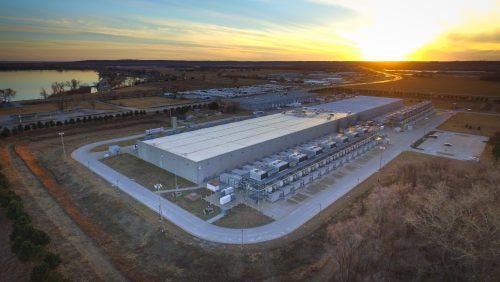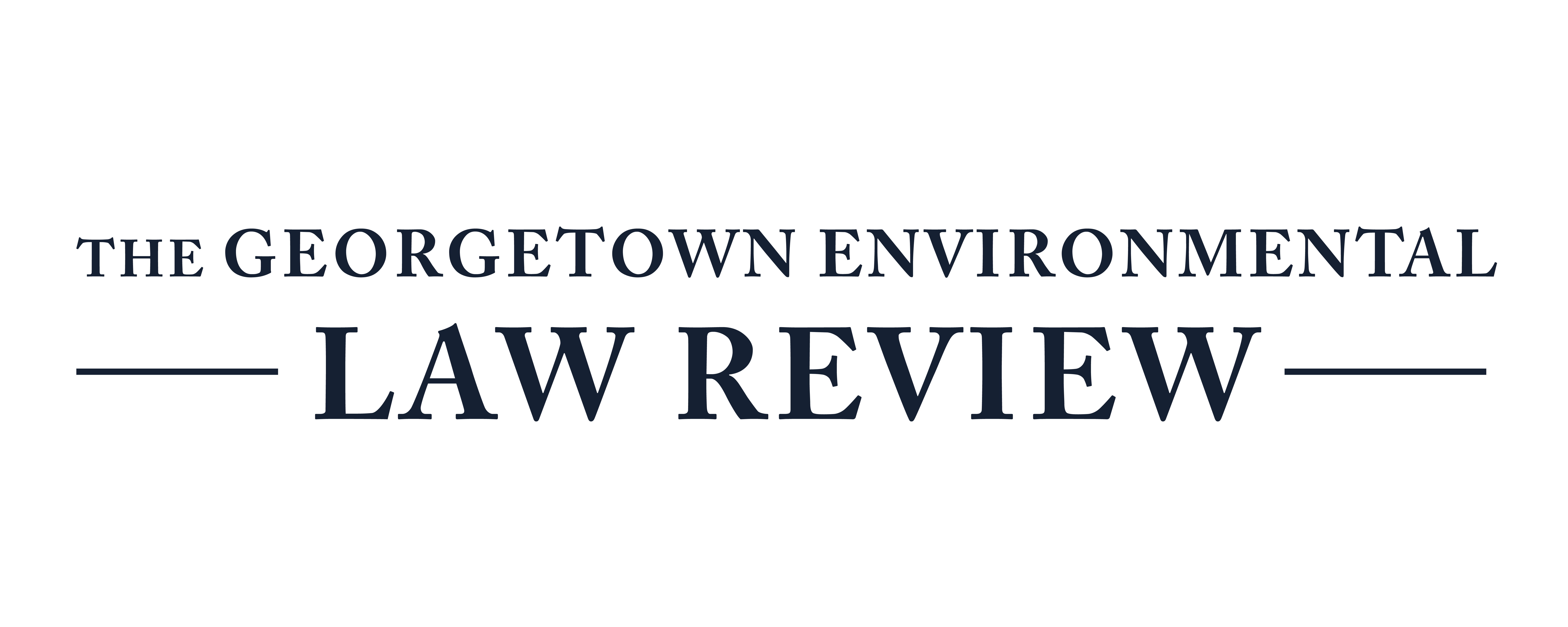Consumers End Up Paying for the Energy Demands of Data Centers, How Can Regulators Fight Back?
October 6, 2025 by Theo Kaufman

Photograph of a Google data center facility in Iowa.
As artificial intelligence grows and developers plan new data centers, residential consumers are footing the bill for increased electricity demands. Regulators must act to keep energy costs down and maintain the course on climate goals.
Recent investment in artificial intelligence and the continued prevalence of cloud computing in modern life has led to a massive expansion of data center development. These data centers demand a massive amount of energy to fulfill computations, which has been associated with increased costs for residential electricity consumers.[1] Though costs to residential consumers can be mitigated through special rate contracts for data centers, state regulators have an opportunity to regulate the use of energy so that residents do not end up paying for energy-hungry data centers.
OpenAI recently announced that it, along with other partners in the tech industry, would be building several new data centers across the country,[2] which are projected to consume 17 gigawatts of electricity.[3] In 2023, facing a boom of data center infrastructure projects within Virginia, state lawmakers commissioned an impact study, which found that “unconstrained demand largely from data centers would drive up Virginia’s energy usage 183% by 2040,” as opposed to only 15% growth without any new data centers.[4] This increased demand threatens to defer costs to residential consumers, increasing residential rates by as much as 25% in regional markets.[5] Just this past year it is estimated that 63% of price increases in the region serviced by PJM were driven by data centers.[6]
In the United States, utilities typically base consumer electric rates on the average cost of providing electric service to similar consumers.[7] In anticipation of growing demand, utilities must expand transmission and delivery infrastructure. These new costs are passed on to consumers under a formula that typically charges residential consumers higher rates than industrial ones, since households use less electricity on average and are more spread out.[8] Thus, residential consumers subsidize new infrastructure for new consumers: in this case, data centers.
There is currently no concise federal framework for regulating data center development, leaving regulation largely up to the individual states. However, a bill introduced by Senators Whitehouse and Fetterman, the Clean Cloud Act of 2025, would amend the Clean Air Act to set emissions standards for servers and other equipment used in data centers or crypto-mining facilities, as well as require data collection on energy consumption.[9]
At the state level, there are two main pathways to both environmental protection and minimizing the costs increases to residential electricity consumers.
Through the rate (tariff) setting process at state Public Utility Commissions (PUCs), parties can settle on contract terms for electricity rates that place a higher burden on data center developers. This past year, Indiana Michigan Power (I&M) signed a settlement agreement with Google, Microsoft, and Amazon Web Services, all three of whom planned to build data centers in Indiana. The settlement requires large load customers (demanding greater than 150 megawatts) to pay monthly minimums equal to 90% of their capacity, establish collateral requirements, and contract termination fees.[10] The settlement also requires that the parties work on a “clean transition tariff” supporting investment in renewable energy resources, with costs paid for by the developers.[11] Other tariff proposals have also included provisions to charge data centers for a minimum of their operational capacity and transmission costs, preventing costs from being laid onto residential consumers.[12] But the settlement process for energy tariffs is often obscure and individual contracts between utilities and data center operators are often confidential.[13]
Statewide regulation could also ensure that residential electricity consumers do not foot the bill for data centers. In New York, proposed senate bill S6394A would amend the state environmental conservation law to require data center operators to disclose projected metrics like energy use and emissions prior to construction.[14] The bill would also prevent utility providers from giving discounted rates for fossil fuel power purchase agreements and would require that data centers obtain increasing shares of their energy from renewable resources between 2030 and 2050.[15] The proposed bill would also give the state’s public utility commission the power to counteract the cost increase to residential consumers via “community discount plans.”[16] This proposal offers an opportunity to strengthen N.Y. State’s climate goals, established in the Climate Leadership and Community Protection Act (CLCPA), and ensure that data center development is consistent with state environmental principles.[17]
With similar laws appearing across the country,[18] the future of energy use may well be in the hands of state and local regulators, as they try to balance (1) reducing the strain on residential consumers’ energy bills, (2) encouraging investment in their communities, and (3) staying committed to climate goals. At this juncture, regulatory developments may largely be a question of political will, but states must act to ensure that data center development does not place an undue burden on residential consumers.
[1] Ethan Howland, Utilities may subsidize data center growth, Utilitydive (Mar. 10, 2025), https://www.utilitydive.com/news/utilities-subsidize-data-center-growth-ratepayer-cost-shif-harvard-peskoe/742001/.
[2] Cade Metz, OpenAI to Join Tech Giants in Building 5 New Data Centers in U.S., N.Y. Times (Sept. 23, 2025), https://www.nytimes.com/2025/09/23/technology/openai-data-centers-united-states.html.
[3] Eva Roytburg, Sam Atlamn’s AI empire will devour as much power as New York City and San Diego Combined. Experts say it’s ‘scary’, Fortune (Sept. 24, 2025), https://fortune.com/2025/09/24/sam-altman-ai-empire-new-york-city-san-diego-scary/.
[4] Alex Brown, Lawmakers fear AI data centers will drive up residents’ power bills, Stateline (Apr. 10, 2025), https://stateline.org/2025/04/10/lawmakers-fear-ai-data-centers-will-drive-up-residents-power-bills/.
[5] Michael Blackhurst et al., Data Center Growth Could Increase Electricity Bills 8% Nationally and as Much as 25% in Some Regional Markets, Carnegie Mellon Univ.: Work that Matters: Energy & Innovation (July 16, 2025), https://www.cmu.edu/work-that-matters/energy-innovation/data-center-growth-could-increase-electricity-bills.
[6] Cathy Kunkel, Projected data center growth spurs PJM capacity prices by a factor of 10, Institute for Energy Economics and Financial Analysis (July 30, 2025), https://ieefa.org/resources/projected-data-center-growth-spurs-pjm-capacity-prices-factor-10#:~:text=The%20near%2Dterm%20tightening%20of,without%20data%20centers%27%20electricity%20demand.
[7] Eliza Martin and Ari Peskoe, Extracting Profits from the Public: How Utility Ratepayers Are Paying for Big Tech’s Power, H.L.S. Environmental & Energy Law Program 4 (Mar. 2025), https://eelp.law.harvard.edu/wp-content/uploads/2025/03/Harvard-ELI-Extracting-Profits-from-the-Public.pdf.
[8] Id. at 7.
[9] See Clean Cloud Act of 2025, S.1475, 119th Cong. (2025), https://www.congress.gov/bill/119th-congress/senate-bill/1475/text.
[10] In the Matter of the Verified Petition of Indiana Michigan Power Company for Approval of Modifications to Its Industrial Power Tariff – Tariff I.P., Cause No. 46097 IURC (Feb. 19, 2025), https://iurc.portal.in.gov/docketed-case-details/?id=b8cd5780-0546-ef11-8409-001dd803817e.
[11] Id; see also Leslie Bonilla Muñiz, Ratepayer advocates hail ‘landmark’ settlement with data centers, utility company, Indiana Capital Chronicle (November 26, 2024), https://indianacapitalchronicle.com/2024/11/26/ratepayer-advocates-hail-landmark-settlement-with-data-centers-utility-company/.
[12] See Martin and Peskoe, supra note 9 at 16. (American Electric Power in Ohio proposed a new tariff that would require data centers to pay 90% of maximum demand costs for a 10-year period, including transmission costs).
[13] See Martine and Peskoe, supra note 9 at 2, 11.
[14] See generally S.B. 6394A, Gen. Assemb., 2025-2026 Reg. Sess. (N.Y. 2025), https://www.nysenate.gov/legislation/bills/2025/S6394/amendment/A.
[15] S.B. 6934A, §5.
[16] Id.
[17] S.B. 6934A §2.
[18] See generally, S. 4143, 2024-2025 Reg. Sess. (N.J. 2025), https://www.njleg.state.nj.us/bill-search/2024/S4143/bill-text?f=S4500&n=4143_S1; see also Stateside, Powering the Future: How States Are Responding to Data Center Energy Demands, Stateside (Sept. 18, 2025), https://www.stateside.com/blog/data-center-energy-demands.

